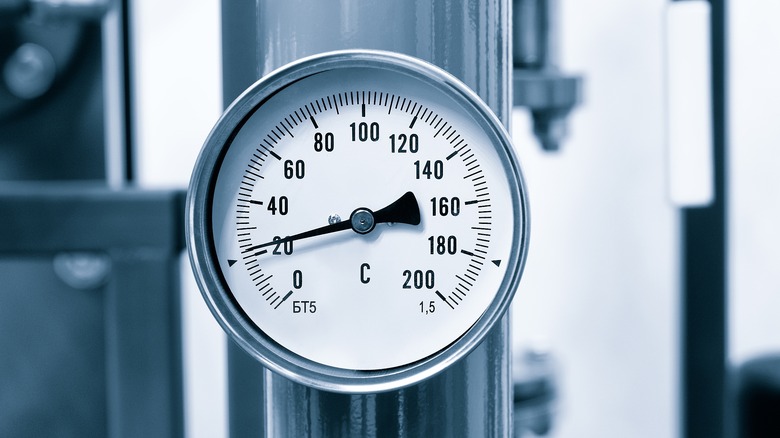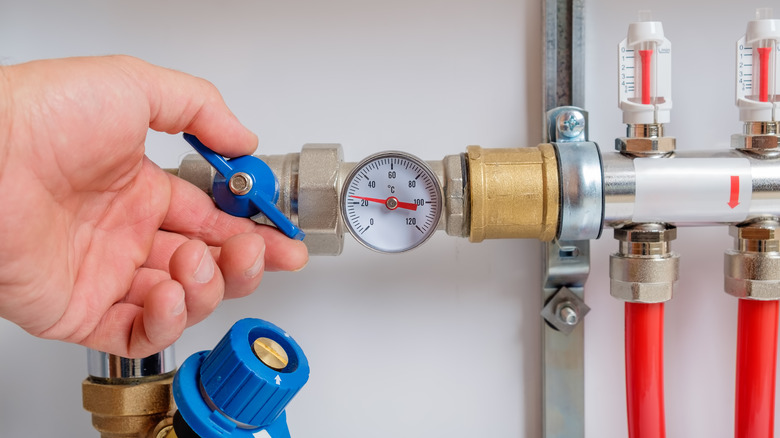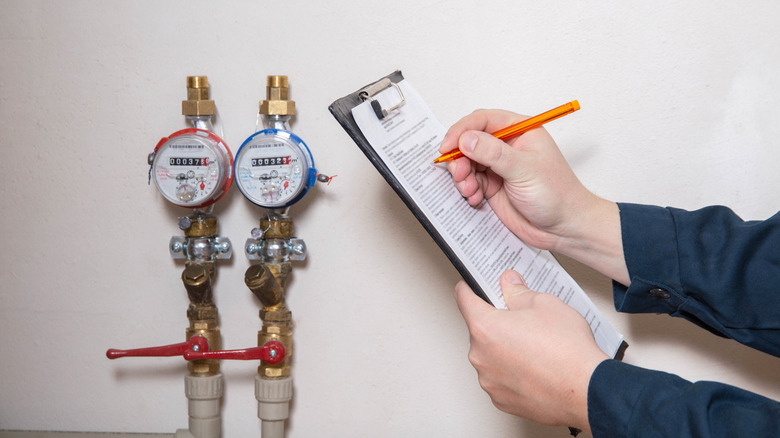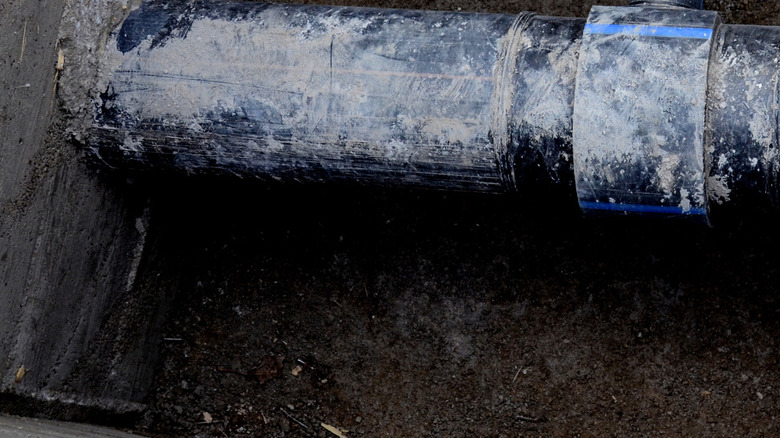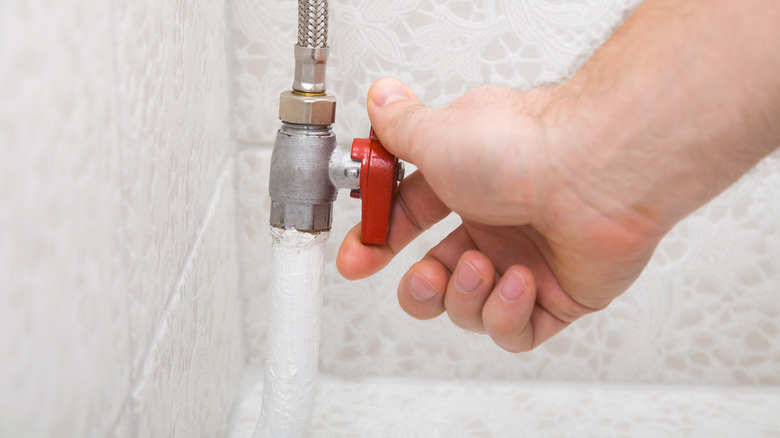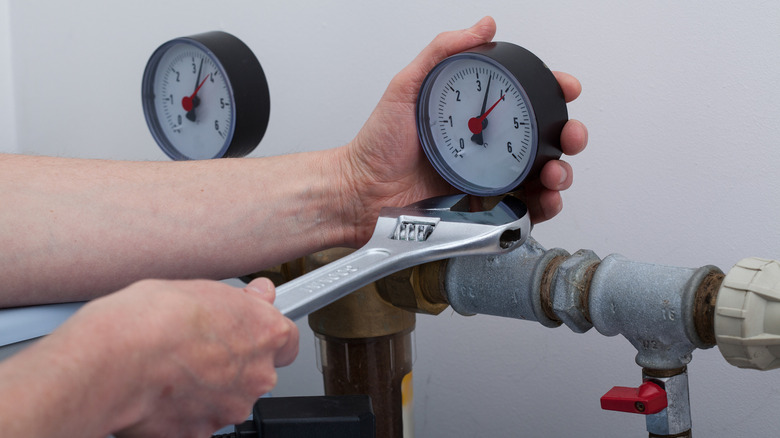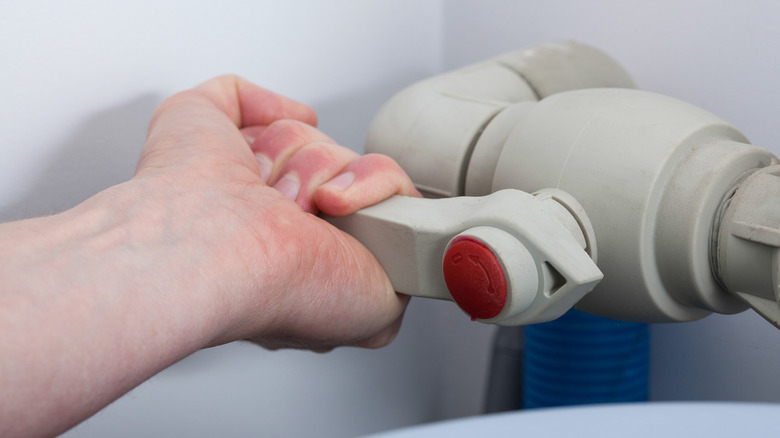What Is A Water Pressure Regulator And How Does It Work?
No plumbing system is complete without a water regulator. Don't believe us? We can prove it. Ever heard of pipes bursting in the heat of summer for no obvious reason? Well, to the untrained eye there might be no obvious reason, but the experts can figure out the problem the first time you tell the story: pressure.
A lot of people take water and plumbing systems for granted; we saw a little bit of that when we discussed municipal water, and called some of you out on bad behavior. But that is beside the point. Another major water issue people tend to take for granted is the water pressure regulator in their homes.
The basic function of a water pressure regulator is to create stability whenever the pressure is too high, above the intended pounds per square inch, says Complete Plumbing. Without one, you risk leaks, pipe bursts, and even repair expenses. So today, we'll be discussing what exactly a water pressure regulator is and everything else we think you should know about it.
What is a water pressure regulator?
Most homeowners understand that all a water pressure regulator does is simply reduce and increase the pressure of water flowing into their home in a manner that is suitable for the entire plumbing system. However, the technical definition of a water pressure regulator goes by another name, which according to Inspectapedia, is a pressure reducing valve.
This means that it is machinery that significantly lessens the water pressure, coming straight into the home from the main supply. This invention exists because the amount of water pressure that is common in the main supply — often 160 to 200 pounds per square inch, as stated by the Code of Federal Regulations — is often way too much. And, if precautions aren't taken, it can and will cause damage to plumbing fixtures, which are designed for pressure levels of 50 pounds per square inch.
While appliances like dishwashers and washing machines already have an inbuilt pressure reduction valve, there is an intrinsic need for a general water pressure regulator. We will explain it shortly in the sections below.
How does a water pressure regulator work?
Salespeople have probably tried to talk you into buying their brand's water pressure regulator by saying something like, if you do not buy one, your plumbing fixtures could burst, leak, or even get destroyed — but they are not wrong. You don't have to take our word for it; we'll explain how a water pressure regulator works and why your plumbing fixtures are at risk without it.
A water pressure regulator is a brass-like item, often shaped like a dome or half a ball, that is located just after the shutoff valve. Yes, we mean that area where the main water line enters the house. At least that's where it should be if you had the job done correctly, says Appliance Analyst. Now, whenever there is high pressure — that is, pressure higher than the recommended/required 50 pounds per square inch — the mechanism of the water pressure regulator constricts to narrow the flow and as such, tension is reduced rather than increased on your plumbing fixtures. This prevents leaks and outright pipe bursts, which we like to call undesirable splats.
On the other side, whenever there is less pressure the machinery opens up and allows more water to pass through. With the water pressure regulator, there is also a screw right at the top which can be used to tighten or loosen the machinery and increase the outgoing water pressure, writes Ashley Valley Water and Sewer.
Uses of the water pressure regulator
A water pressure regulator is a must-have for every home. It really shouldn't be up for debate. Why not? Great question! The experts at Way Point Inspection write that the water pressure regulator reduces the pressure going through water lines and as such, it helps save time and money.
Even more, the reduction of water flow from the original 150 pounds per square inch to 50 pounds per square inch less reduces water use and as such, saves water, money and of course, our planet. Also, the water pressure regulator functions as protection for your pipes or your plumbing fixtures, ensuring they last the length of the warranty, or even past than the proposed warranty date. This way, you'll have fewer plumbing maintenance check-ins throughout the year or even throughout use.
Finally, the experts at Physics Forum write that the pressure reduction valve or water pressure regulator (same thing) helps reduce friction and ensures smooth sailing all through.
Pros and cons of a water pressure regulator
Since Psychology Today says that people would rather have the bad news first, we'll start with the cons of a water pressure regulator. Now, bear in mind that these may not exactly be cons per se, but challenges that you may encounter while using the device and more often than not, after using it for quite a while.
The first con that you may encounter is what we like to playfully consider an overdrive of the function of the water pressure regulator: blockage. Now, over time, there is the possibility that the mineral deposits in the water filtered by the water pressure regulator can settle and solidify, and as such, prevent adequate flow from the main supply to the house, writes Aurora Plumbing. To fix this, all you have to do is clean the water pressure regulator from time to time, preferably every three months. On the other hand, there is the issue of internal component damage after extensive use, and the user-caused issue that stems from incorrectly setting the valve from the top screw.
You should be quite familiar with the pros of the water pressure regulator by now. They include quite a lot of savings such as saving water, saving electricity, and even saving money (not in a bank though). It also lessens the wear and tear on your appliances and your plumbing fixtures, stabilizes pressure, and reduces the risk of leakages among other things, says Adaven Plumbing.
Types of water pressure regulators
Essentially, there are two types of water pressure regulators and they both have their distinct uses. There's the pilot-operated water pressure regulator, also known as the pilot-operated pressure-reducing valve, and the direct-acting water pressure regulator also known as the direct-acting pressure-reducing valve.
The direct-acting water pressure regulator, according to the experts at Inspectapedia, is quite small and thus is the recommended pressure reducing valve for smaller loads. It is usually quite cheap, easy to find, compact, and the go-to pressure reducing valve for installations that cut across home use (point of use installations).
On the other hand, the pilot-operated water pressure regulator is the go-to item for larger loads that require heavier pressure control, often used at manufacturing sites, hotels, schools, and places that attract the masses, says Aurora Plumbing. It comes in two forms. First, we have the internally-piloted pressure-reducing valve which, ensures precision within +/–5%. There's also the externally-piloted pressure-reducing valve, which has a capacity of up to +/– 1%.
How to install a water pressure regulator
Caveat, reader: Unless you are a licensed plumber, you really shouldn't be doing this yourself. However, if you must attempt a DIY project, you should have enough skills that will make saving $350 of labor costs (via Ncert Point) worth it — and not cause $1,000 worth of damage to your entire plumbing system. Got that? Great!
First off, you need to find the installation spot. According to Complete Plumbing, the water pressure regulator is to be installed where the main water line meets your home. Once you have identified that, shut off the water and run the rest of the water out of the faucets until it is all dry. The next step is to cut off 6 inches out of your pipe right after the shut-off valve. In that spot, connect the fittings at each end. Fit your regulator in and tighten it up with pliers until it is fastened. Turn the screw at the regulator till the desired pressure, and then you are good to go.
How to care for a water pressure regulator
Like everything else, even your water pressure regulator will also age with the passing of time. This is why it requires proper maintenance if it will extend past or even reach its recommended warranty date. The basic care your water pressure regulator requires is periodic washing like we stated earlier— every three months.
On the other hand, Guardian Plumbers recommends that if you notice any issues, it may just be time to replace the water pressure regulator. Leaks are the first indicator that you a have busted water pressure regulator. Also, if you notice some inconsistencies in water pressure, you need to replace your water pressure regulator, says Premier Plumbing. You must test the water pressure at least once a year and if you do find any inconsistencies, you should replace the water pressure regulator as soon as possible.

